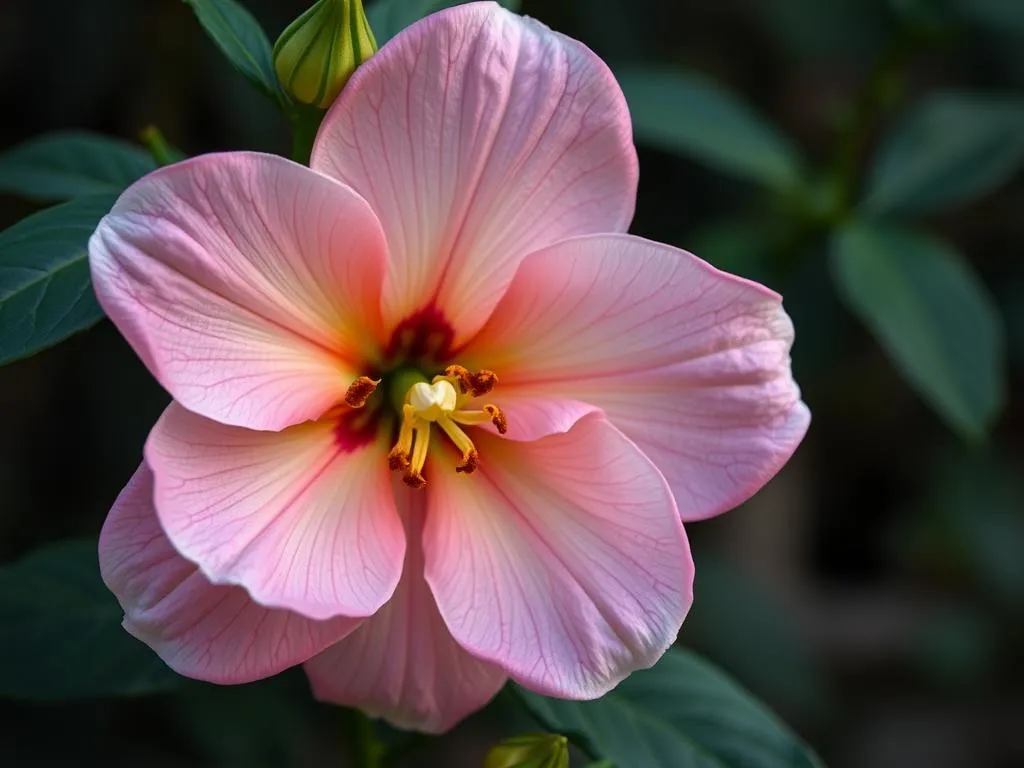
Introduction
Taking care of a dog involves more than just feeding and walking. Dog health care encompasses a wide range of responsibilities, including regular vet visits, proper nutrition, and ensuring a safe environment. In today’s world, where many pet parents are opting for beautifully landscaped gardens, it is vital to be aware of the plants and flowers that could pose a risk to our furry friends.
Certain flowers contain compounds that can be toxic to dogs, leading to a range of health issues. Understanding which flowers are poisonous and recognizing the symptoms of toxicity is essential for every dog owner. This article serves as a comprehensive guide to help you identify flowers that are harmful to dogs and offers valuable tips on how to keep your pet safe.
Understanding Dog Toxicity
What Makes a Plant Poisonous?
Plant toxicity refers to the harmful effects that certain plants can have on animals, including dogs. Many plants contain toxic compounds such as alkaloids, glycosides, and saponins, which can lead to various health complications when ingested. These compounds affect the body in different ways, depending on the type of plant and the amount consumed.
How Dogs Are Affected by Toxic Plants
When dogs ingest toxic plants, they can exhibit a range of symptoms. The severity of the reaction often depends on the dosage and type of plant consumed. Symptoms can include gastrointestinal disturbances, neurological issues, and even severe reactions that may require immediate medical attention. Understanding these symptoms helps dog owners act quickly in a potential poisoning situation.
Common Poisonous Flowers for Dogs
Overview of Poisonous Flowers
Many flowers bloom during various seasons, and while they can beautify our gardens, some can be extremely dangerous to dogs. Being aware of these plants is crucial for keeping your pet safe.
Detailed List of Poisonous Flowers
Azalea
Azaleas are popular ornamental shrubs known for their vibrant blooms. However, they are also highly toxic to dogs. Ingestion can lead to symptoms such as vomiting, diarrhea, and even severe lethargy. The toxic compounds found in azaleas can affect the heart, making them particularly dangerous.
Lily
Lilies, including types like the Easter Lily and Tiger Lily, are beautiful but can be deadly to dogs. Symptoms of lily ingestion can include vomiting, diarrhea, and abdominal pain. Some lilies can cause kidney failure in dogs, making them one of the most dangerous flowers to have around pets.
Oleander
Oleander is a commonly used ornamental plant known for its striking flowers. All parts of this plant are toxic to dogs. Ingesting oleander can cause symptoms such as vomiting, decreased heart rate, and even death in severe cases. It’s vital to keep this plant out of reach of your furry friends.
Chrysanthemum
Chrysanthemums are widely grown for their floral beauty, but they can also be harmful to dogs. Symptoms of chrysanthemum ingestion can include vomiting, diarrhea, and skin irritations. While not as deadly as some other plants, they can still cause significant discomfort.
Foxglove
Foxglove is a plant known for its stunning bell-shaped flowers. However, it contains cardiac glycosides, which can be very toxic to dogs. Symptoms of ingestion may include vomiting, diarrhea, and heart problems. Immediate veterinary care is essential if your dog consumes this plant.
Poinsettia
Poinsettias are often associated with the holiday season, but there’s a common misconception that they are extremely poisonous. While they can cause mild irritation and discomfort, such as vomiting and drooling, they are not life-threatening. However, it’s best to keep them away from your dog.
Other Notable Flowers
In addition to the aforementioned flowers, there are several others that pose a risk to dogs. Some of these include:
- Hydrangea: Can cause vomiting and diarrhea when ingested.
- Sago Palm: Not a flower but contains toxins that can lead to liver failure in dogs.
Recognizing Symptoms of Poisoning
Common Symptoms to Watch For
If you suspect your dog may have ingested a poisonous flower, it’s essential to recognize the symptoms. Common signs of poisoning can include:
- Gastrointestinal Symptoms: Vomiting, diarrhea, and abdominal pain are often the first signs to notice.
- Neurological Symptoms: Seizures, disorientation, or loss of coordination may occur, depending on the type of plant ingested.
- Behavioral Changes: Look for signs of lethargy, agitation, or unusual behaviors in your dog.
What to Do if You Suspect Poisoning
If you suspect your dog has ingested a poisonous plant, acting quickly is crucial. First, try to determine what the dog ate and how much. Observe any symptoms that arise, as this information will be helpful for your veterinarian.
You should contact your vet or the animal poison control hotline immediately. In some cases, you may be advised to induce vomiting or bring your dog in for treatment. Keeping a calm demeanor will help you handle the situation more effectively.
Preventing Exposure to Poisonous Flowers
Landscaping with Dogs in Mind
To create a safe environment for your dog, consider landscaping with pet-friendly plants. Many beautiful flowers and shrubs are non-toxic to dogs, allowing you to design a stunning garden without the risk.
Recommended Non-Toxic Flowers
- Marigolds: Bright and cheerful, these flowers are safe for dogs.
- Zinnias: Colorful and hardy, zinnias are also non-toxic.
- Snapshots: These flowering plants are safe and attract butterflies while being safe for your pets.
Training Your Dog
Training your dog to avoid certain plants can be an effective way to keep them safe. Use commands like “leave it” or “no” to discourage your dog from approaching toxic plants. Consistent reinforcement of good behaviors in outdoor settings will help your dog learn which areas to avoid.
Creating Safe Outdoor Spaces
Designing a dog-friendly garden can be achieved by using fencing and barriers to keep your dog away from potentially harmful plants. Consider creating a designated area for your dog where safe plants are planted, allowing them to explore without the threat of poisoning.
What to Do in Case of Exposure
Immediate Actions to Take
If you suspect your dog has ingested a poisonous flower, assess the situation. Determine how much was ingested and identify the type of flower if possible. Look for quick reference signs like vomiting, diarrhea, or lethargy to gauge the severity of the situation.
When to Contact a Veterinarian
If your dog shows any signs of poisoning, contact your veterinarian immediately. Urgent signs that require immediate care include:
- Severe vomiting or diarrhea
- Signs of distress such as difficulty breathing
- Unresponsiveness or loss of consciousness
When contacting your vet, provide as much information as possible, including the type of flower, amount ingested, and symptoms observed. This will help them determine the best course of action and possible treatments for your dog.
Conclusion
Being aware of what flowers are poisonous to dogs is crucial for any responsible pet owner. From azaleas to foxgloves, knowing which plants to avoid can save your dog’s life. Recognizing symptoms of poisoning and understanding how to react can make all the difference in an emergency situation.
Educating yourself on safe landscaping, training your dog to avoid certain plants, and creating a safe outdoor environment will not only protect your furry friend but also enhance your bond as you enjoy a beautiful garden together. As a dog owner, your awareness and proactive measures are vital components of your dog’s health care.









